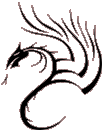Clinical
Manifestations
|
- It most often occurs in persons over 50 years of age (rarely before age 40), with more men than women affected. It is a degenerative disorder of the central nervous system that leads to weakening and wasting of the muscles. Depending upon which neurons are first affected, the disease will manifest differently among individuals, but eventually all four limbs become involved and there may be considerable cramping and stiffness that develops with the partial loss of nervous control over the muscles. A normal course of disease progression is to reach the point that respiration is affected within 5 years after the initial symptoms and diagnosis, causing death. There is about a 5% rate of survival past 12 years, and some people live more than 20 years, while others have rapid disease progression within just 2 years.
- 75 percent of people with classic ALS will also develop weakness and wasting of the bulbar muscles (muscles that control speech, swallowing, and chewing). Symptoms are usually noticed first in the arms and hands, legs, or swallowing muscles. Muscle weakness and atrophy occur disproportionately on both sides of the body. Affected individuals lose strength and the ability to move their arms, legs, and body. Other symptoms include spasticity, exaggerated reflexes, muscle cramps, fasciculations, and increased problems with swallowing and forming words. Speech can become slurred or nasal. When muscles of the diaphragm and chest wall fail to function properly, individuals lose the ability to breathe without mechanical support.
|
Points |
- Reducing method for heat patterns, reinforcing for deficient patterns, puncture on the affected side
Upper limbs: Huatuojiaji, LI-4, LI-11, LI-15, SJ-5, ST-31 to ST-41
Lower limbs: Huatuojiaji, GB-30, GB-34, GB-39, SP-10, ST-31 to ST-41
- Needle the major points along the Du Mai and Ren Mai alternating between the two channels from treatment to treatment (DU-3, DU-4, DU-14, DU-16, DU-20, DU-26; REN-3, REN-4, REN-6, REN-12, REN-17, REN-23, REN-24)
- Wang Letting's method: DU-3, DU-4, DU-5, DU-6, DU-8, DU-9, DU-11, DU-12, DU-13, DU-14, DU-16 This group of 13 points constitutes one treatment, which can be treated along with and alternated with other point sets that are deemed necessary, especially the Huatuojiaji points. Administering acupuncture each day, alternating treatment between two sets of points so that the treatment on two consecutive days is not a repetition.
- Korean Sa-Am protocol - Lung tonification: Tonify LU-9, SP-3, Reduce LU-10, HT-8
- Superficial threading along the Du Mai and Ren Mai with long needles, alternating between the two channels from treatment to treatment
- Plum Blossom: needling along the Du Mai and Ren Mai , alternating between the two channels from treatment to treatment
- Moxa: along the Du Mai and Ren Mai , alternating between the two channels from treatment to treatment
|

